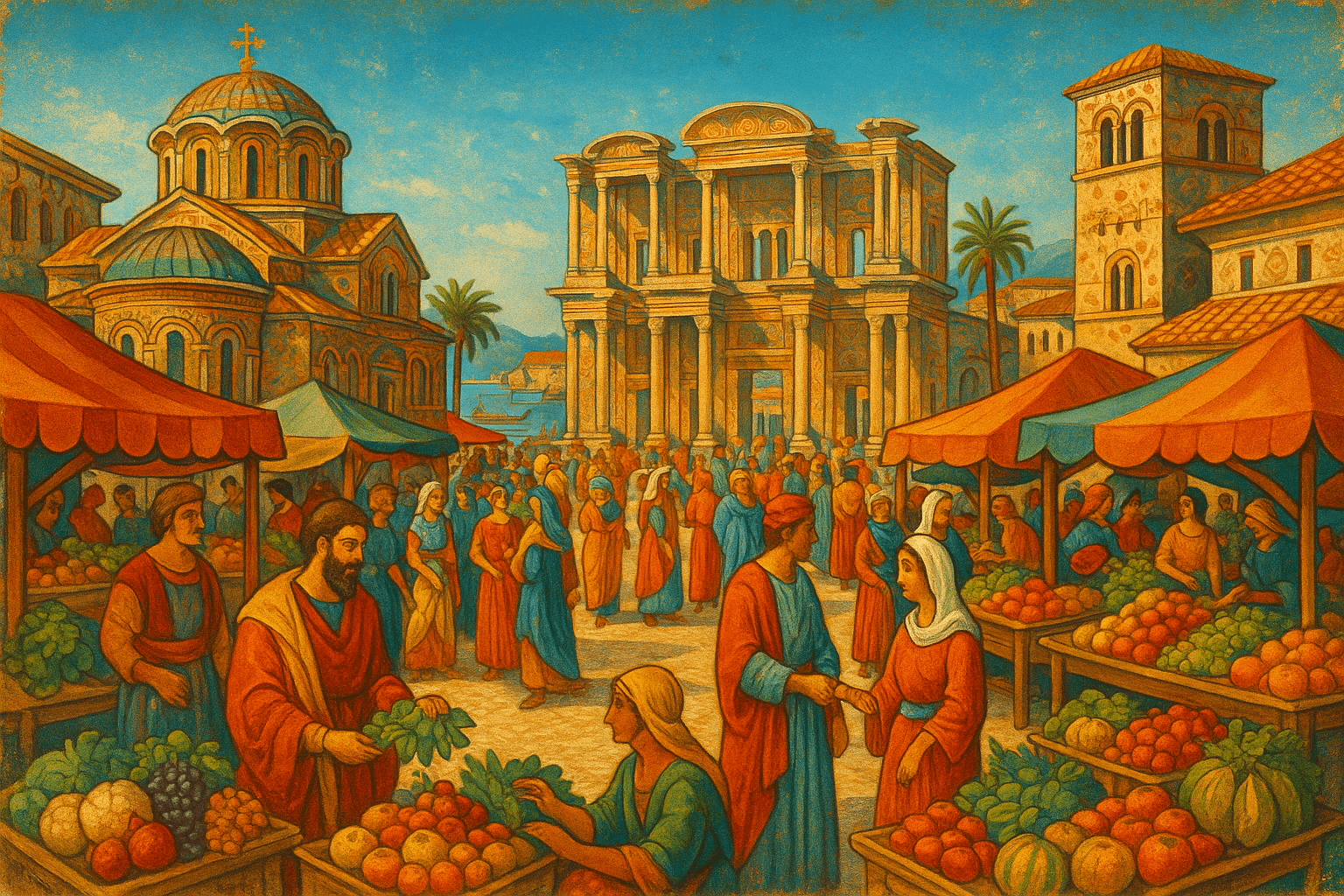This era, from roughly 250 to 400 AD, coincided with the latter part of a long climatic phase known as the Roman Climate Optimum (RCO). For a few crucial centuries, the Eastern Mediterranean enjoyed a climate that was warmer, wetter, and more stable than the periods before or after. This climatic sweet spot created a cascade of positive effects that laid the very foundations of early Byzantine civilization.
A Benevolent Climate in a Time of Turmoil
To understand the impact of this climate period, we have to look at what scientists call paleoclimatology—the study of past climates. By analyzing evidence from tree rings, lakebed sediments, and ice cores, researchers have pieced together a picture of the ancient environment. What they found for the Eastern Mediterranean in this period is striking.
The Roman Climate Optimum brought:
- Warmer Temperatures: This extended growing seasons, allowing farmers to produce more food and even cultivate crops at higher altitudes than was previously possible.
- Increased and Reliable Rainfall: In a region where water is life, this was perhaps the most crucial factor. Consistent winter rains filled reservoirs and ensured that staple crops like wheat and barley thrived. Olive groves and vineyards, the backbone of the Mediterranean diet and economy, flourished.
- Climatic Stability: Just as important as the warmth and wetness was the lack of extreme weather events. The period saw fewer devastating droughts or killing frosts, providing a level of predictability that is an agricultural society’s greatest asset.
While the Western Empire began to suffer from a cooling, more volatile climate that hampered agriculture, the East was basking in a climatic golden age. This divergence played a significant role in the shifting fortunes of the two halves of the Roman world.
From Bountiful Harvests to a Population Boom
The most direct consequence of this favorable climate was an agricultural revolution. With food security came abundance. The fertile lands of Egypt, Syria, and Anatolia (modern-day Turkey) produced massive grain surpluses, not only feeding their own people but also allowing for export.
Archaeological evidence powerfully supports this narrative. Across the Levant and Anatolia, surveys have uncovered a dramatic increase in the number and size of rural settlements dating to this period. Marginal lands, like the arid Negev Desert in southern Israel, were suddenly dotted with sophisticated farms and villages sustained by intricate water-harvesting systems. This wasn’t a land of sparse survival; it was a landscape of intensive, successful cultivation.
More food inevitably leads to more people. Historians and archaeologists believe the Eastern Mediterranean experienced a significant population boom during these centuries. Cities like Antioch, Alexandria, and the newly founded Constantinople swelled with inhabitants. This demographic surge provided the manpower for grand construction projects, the soldiers for imperial armies, and the tax base that funded the increasingly complex Byzantine state.
Fueling a Cultural and Spiritual Golden Age
Prosperity is the engine of culture. A society that is not preoccupied with basic survival has the resources to invest in art, architecture, philosophy, and religion. The wealth generated during the Byzantine Climate Optimum did exactly that.
This was the era when Christianity, newly legalized and soon to be the state religion, began to truly flourish. The burgeoning population and overflowing imperial coffers funded the construction of magnificent churches across the empire. It was a time of intense theological debate, leading to the great Ecumenical Councils that would define Christian doctrine for centuries to come. This spiritual energy was built on a bedrock of material security.
We see this prosperity reflected in the stunning art of the period. Intricate floor mosaics, once a luxury for the ultra-elite, became more common in the villas of wealthy landowners and even in public buildings. The era set the stage for the monumental artistic achievements of the following centuries, from the shimmering mosaics of Ravenna to the architectural marvel of the Hagia Sophia in Constantinople. These weren’t just expressions of faith; they were displays of a society confident in its wealth and stability.
The End of an Era: When the Climate Turned
Like all good things, the Byzantine Climate Optimum came to an end. Beginning in the 5th century and accelerating in the 6th, the climate began to change. The period known as the Late Antique Little Ice Age set in, bringing colder, drier, and more erratic weather. Volcanic eruptions in 536 and 540 AD likely exacerbated this shift, casting a “dust veil” over the hemisphere and further chilling the climate.
The consequences were severe. Agricultural yields plummeted. Famine became a recurring threat. A population already weakened by hunger was then ravaged by the Plague of Justinian in the 540s, one of the deadliest pandemics in human history. The empire that had seemed so robust just a century earlier was suddenly fragile, its resources dwindling as it faced renewed threats on its borders.
The story of the Byzantine Climate Optimum is a powerful reminder that history is more than a chronicle of emperors, battles, and laws. It is a complex interplay between humanity and the environment. For a precious 150 years, a benevolent climate gave the Eastern Roman Empire the breathing room it needed not just to survive, but to thrive, creating a vibrant, populous, and wealthy civilization that would carry the legacy of Rome for another thousand years.
